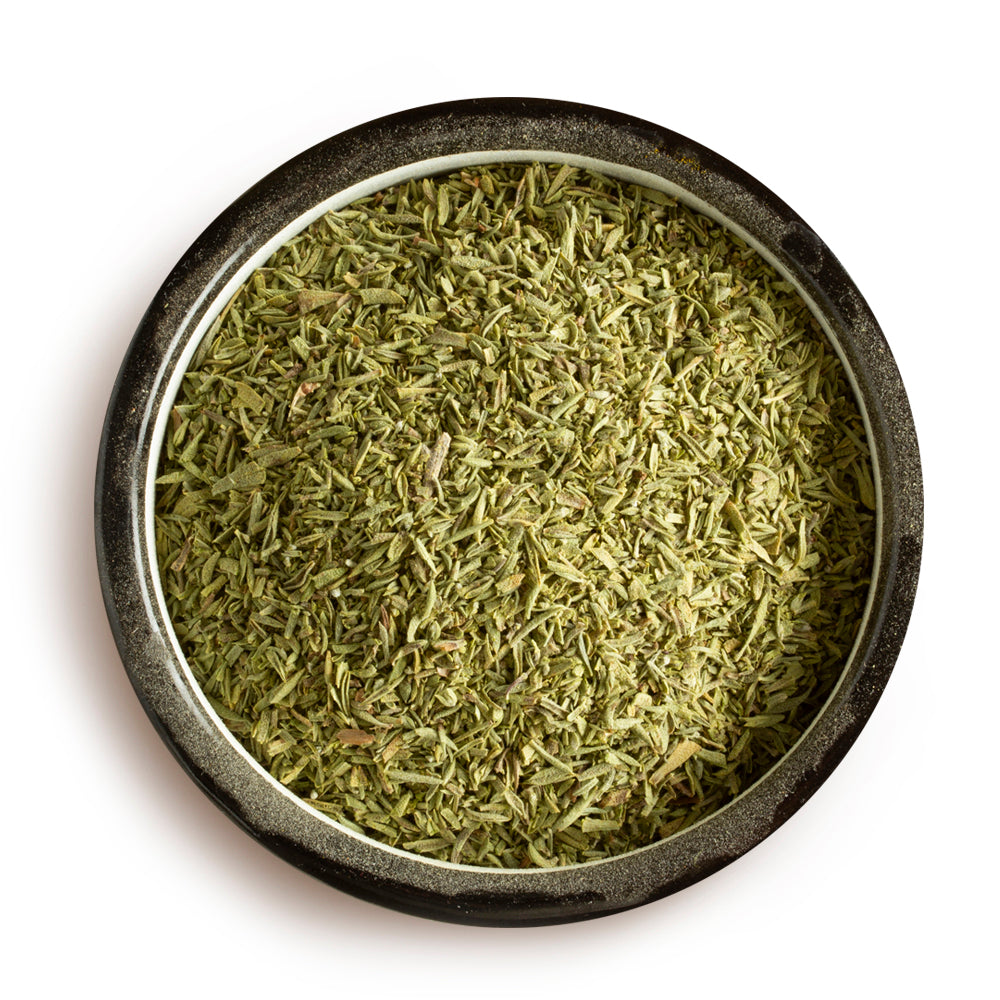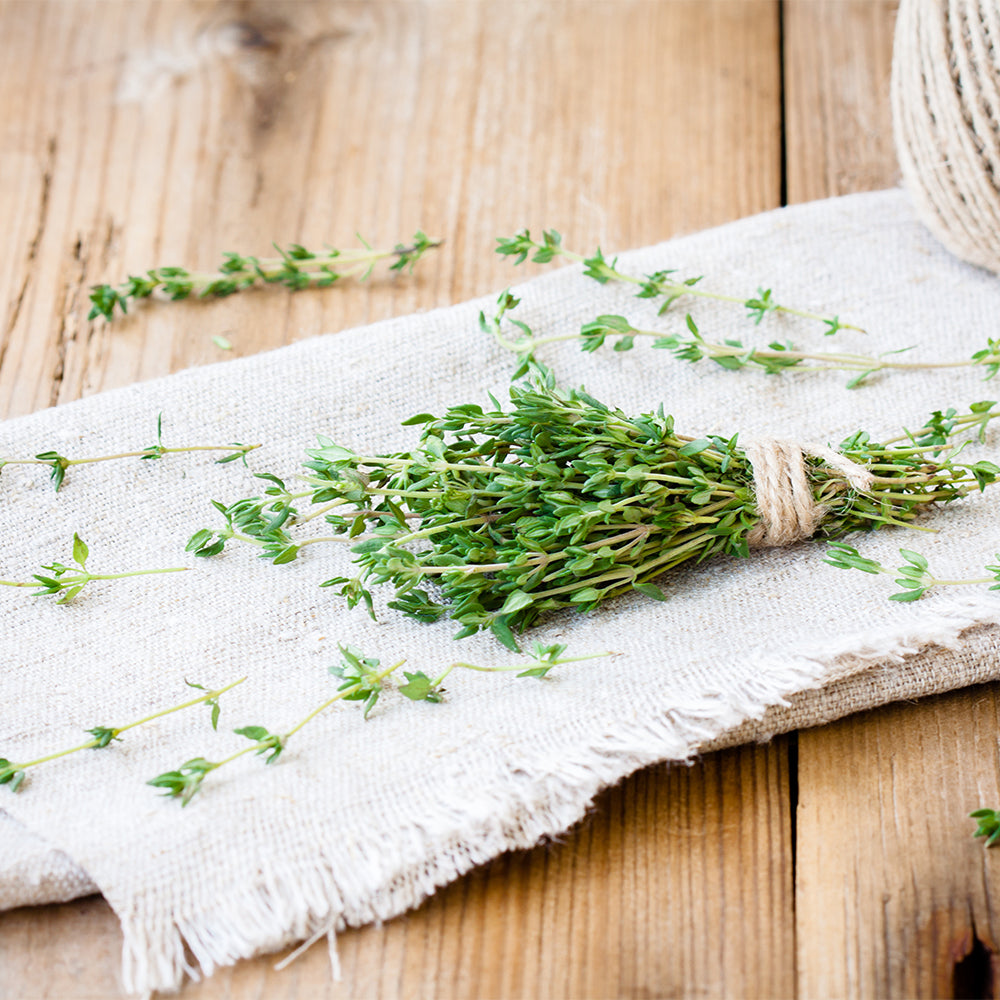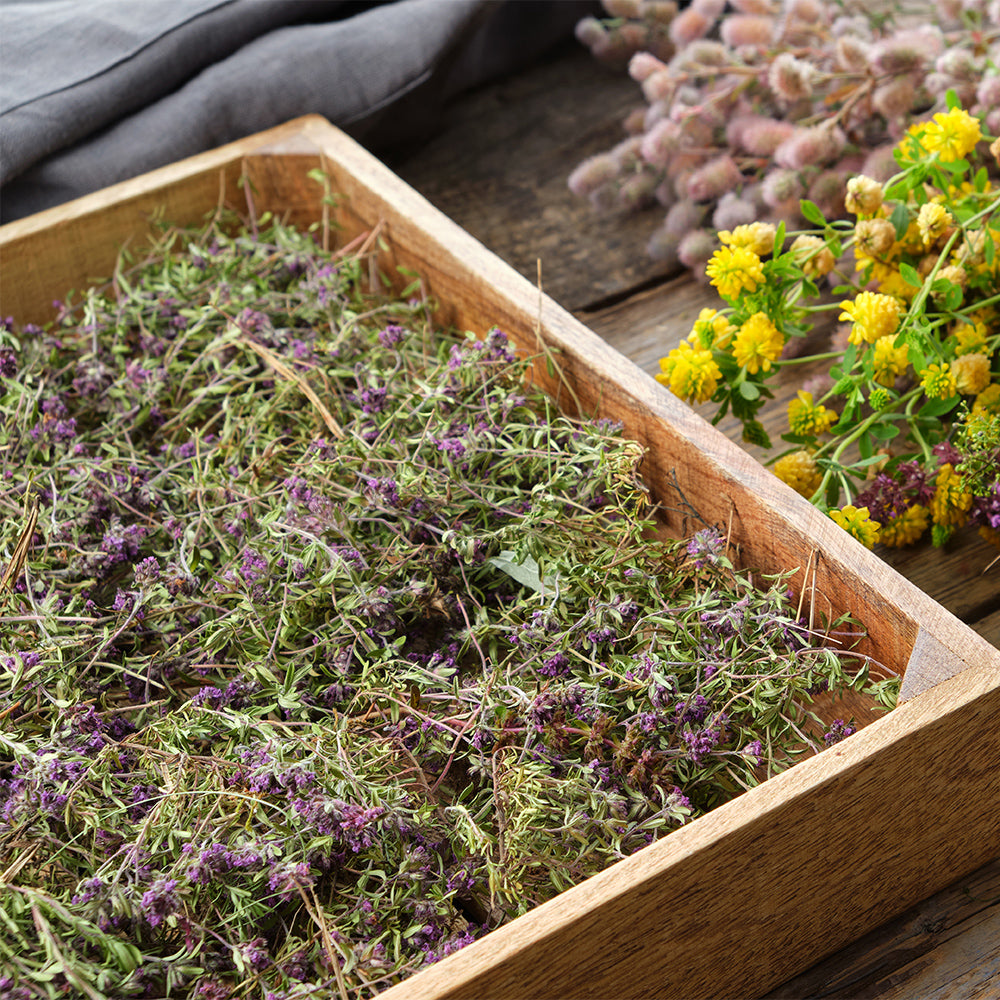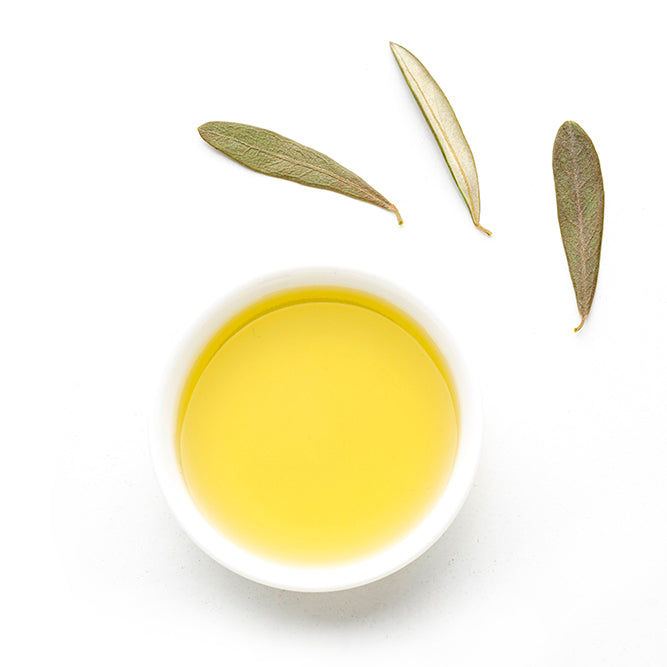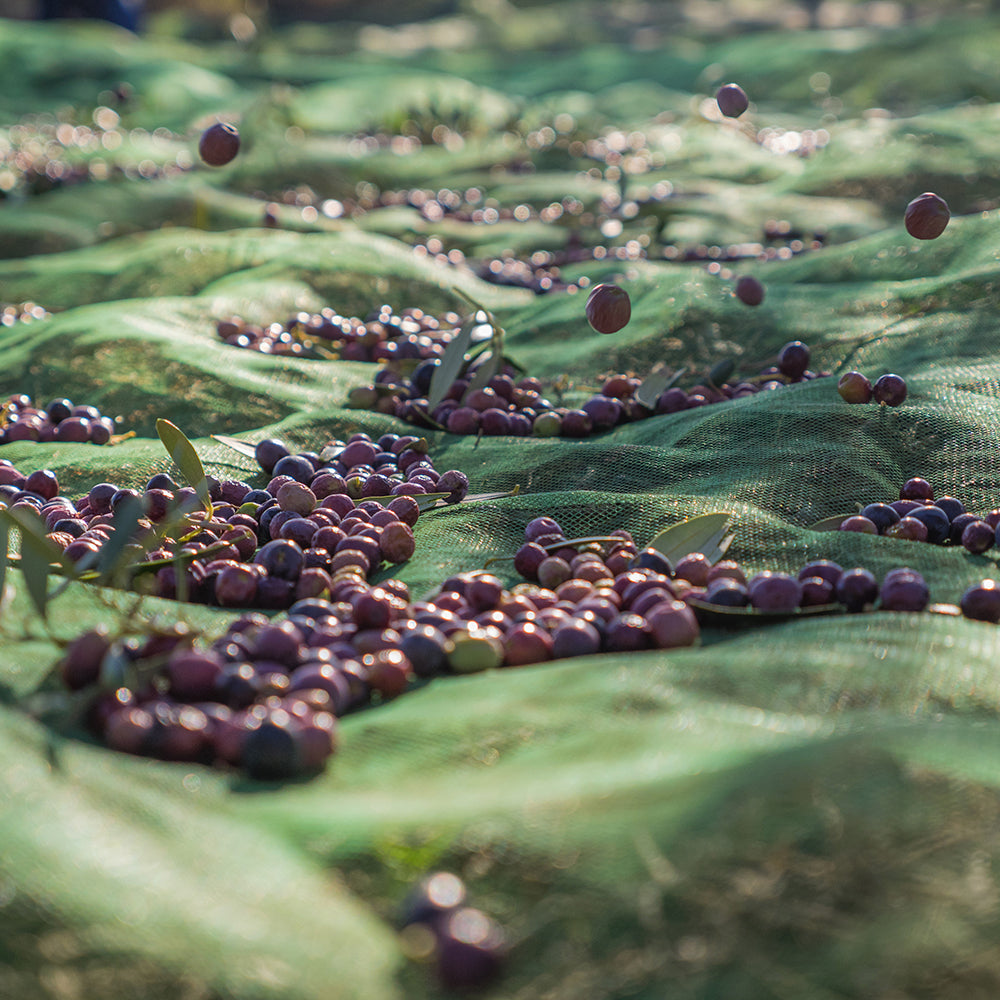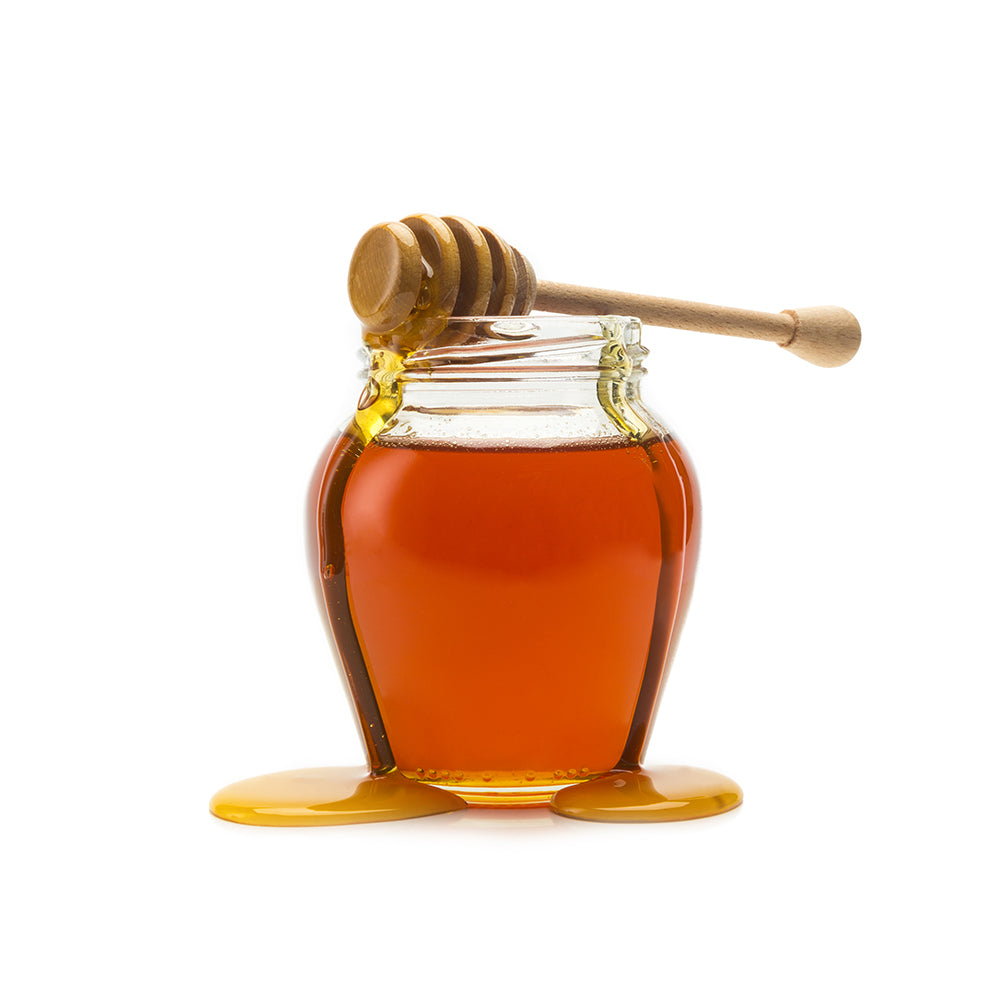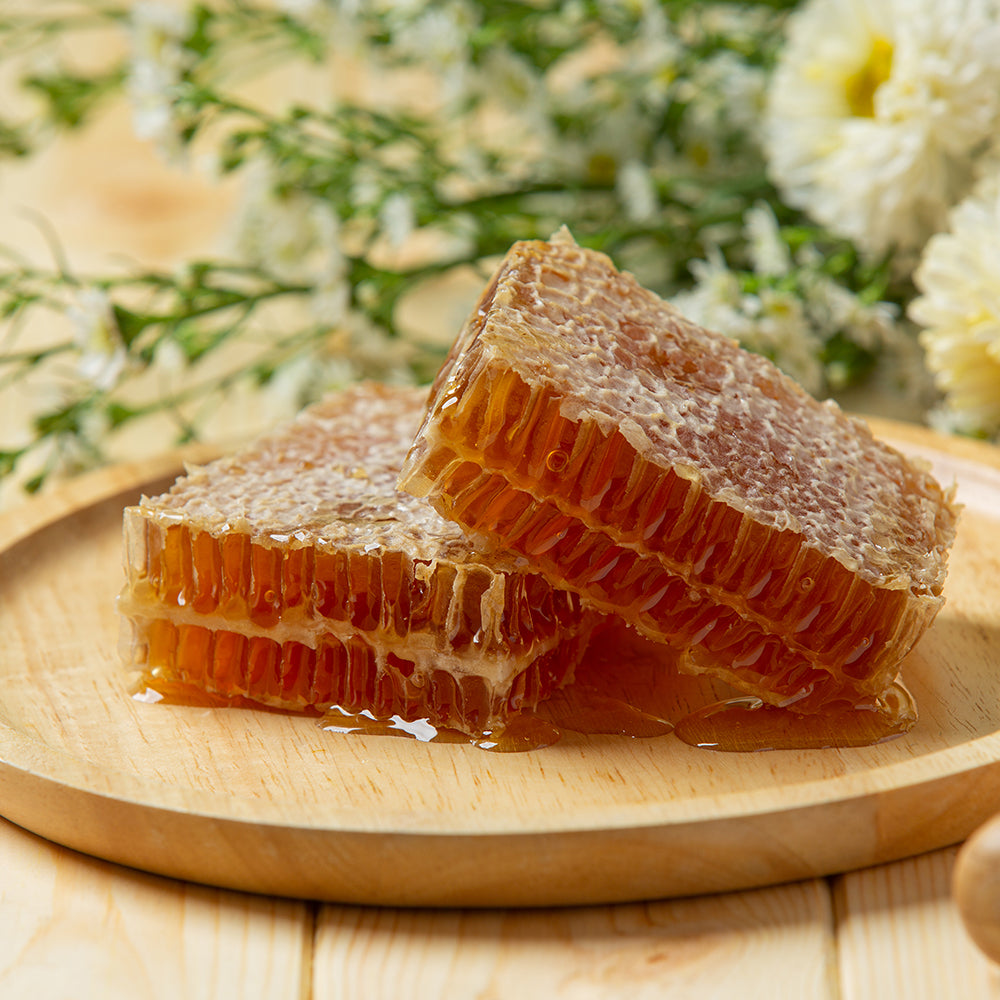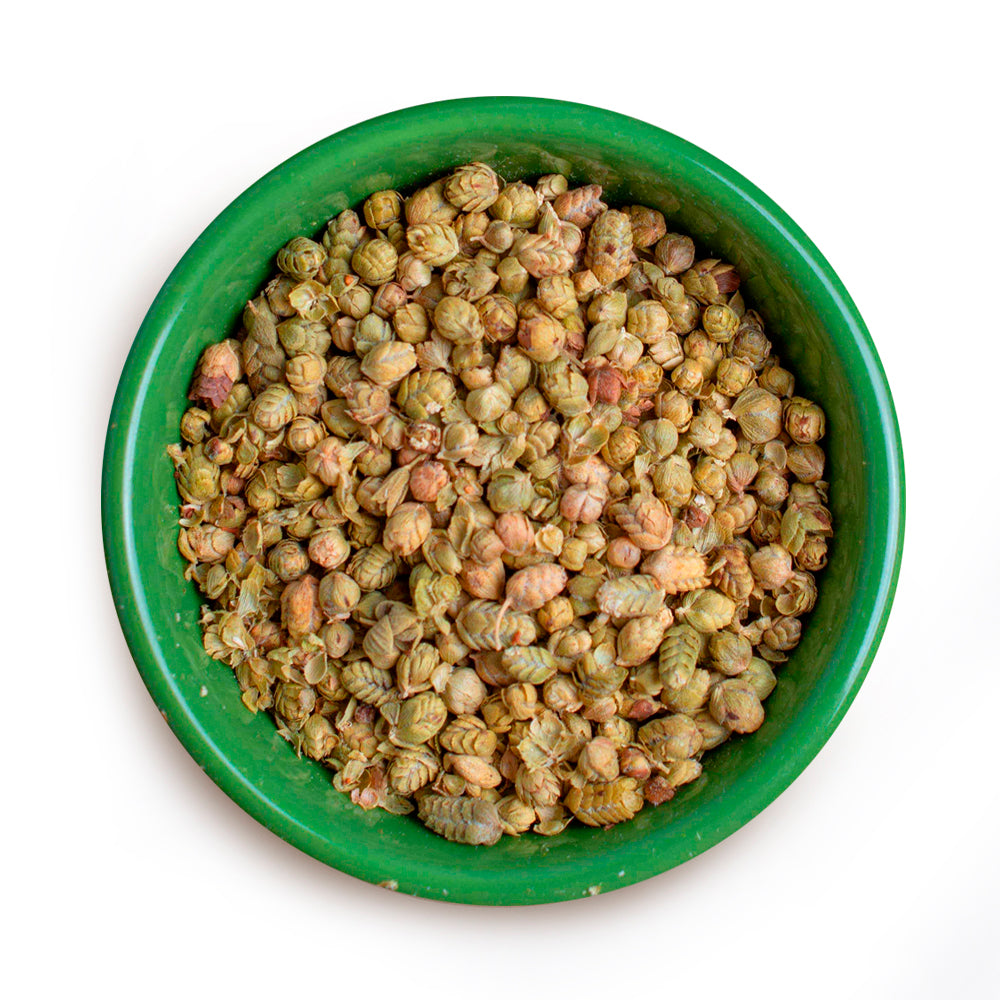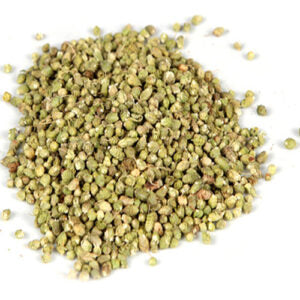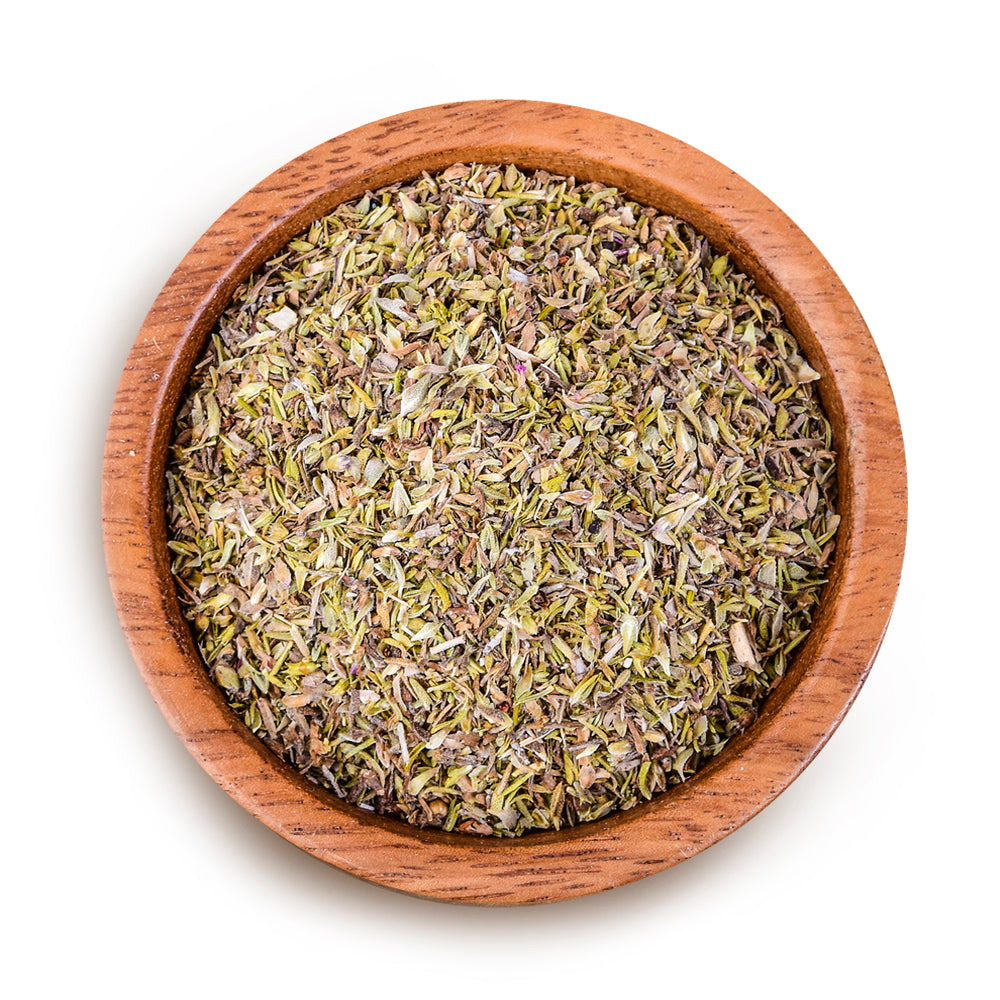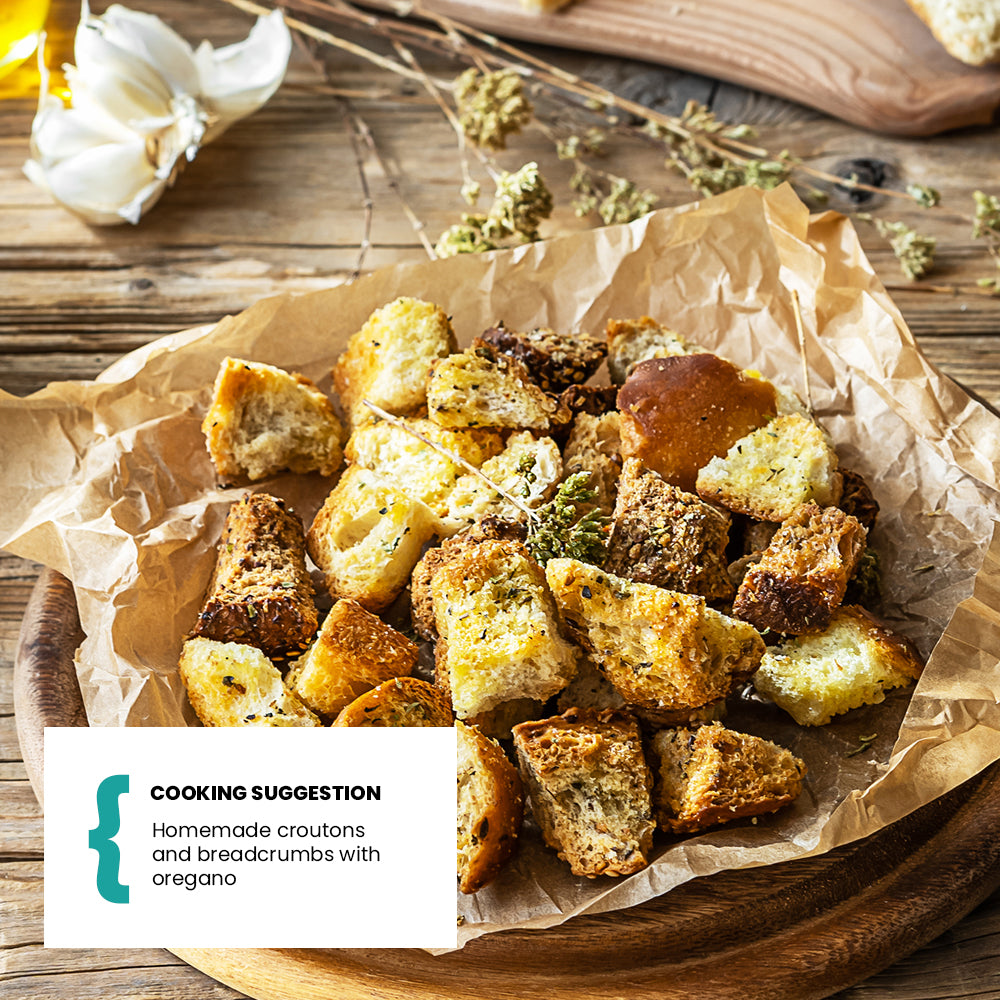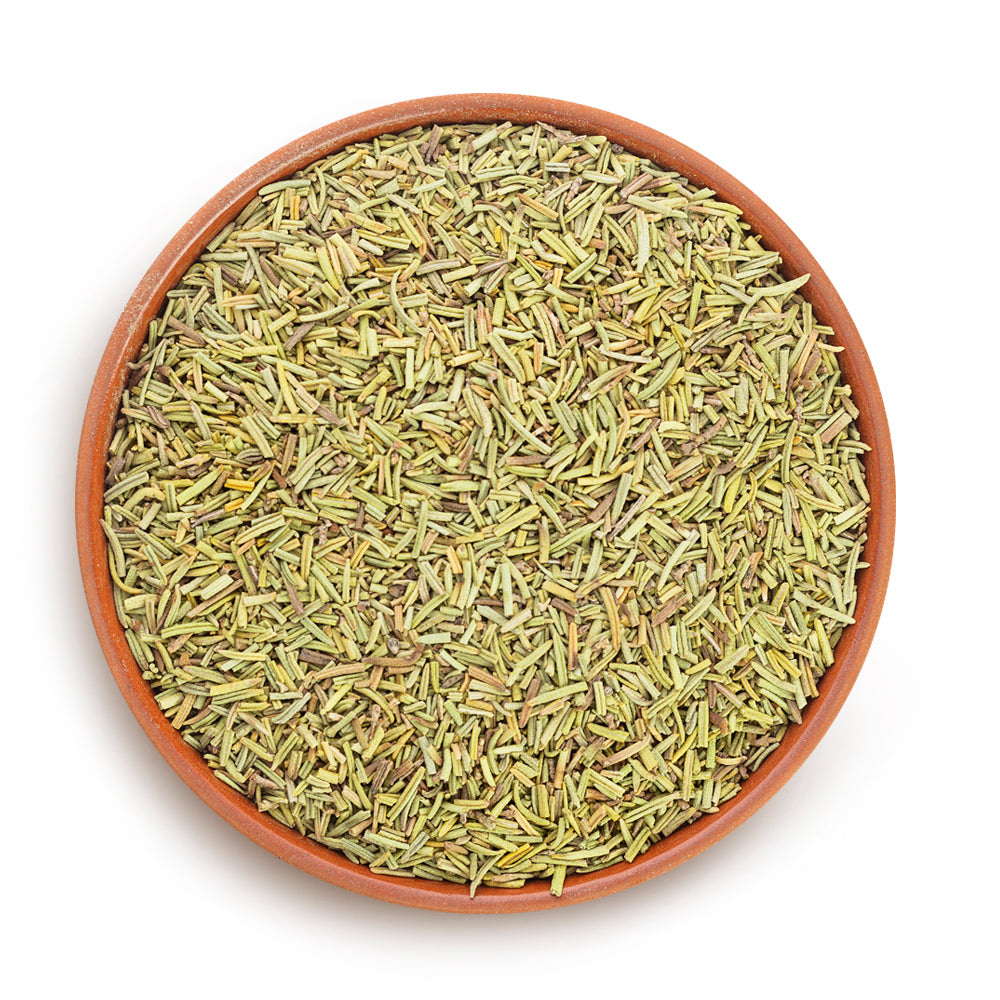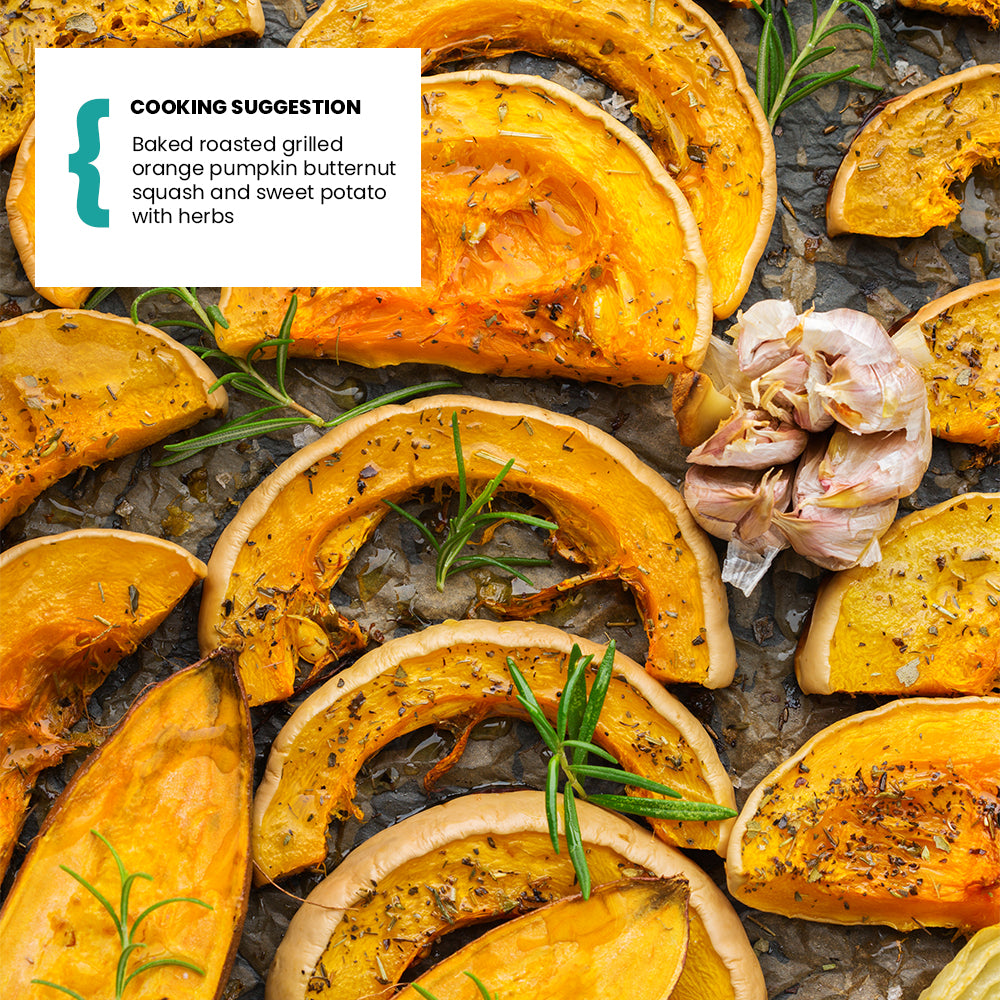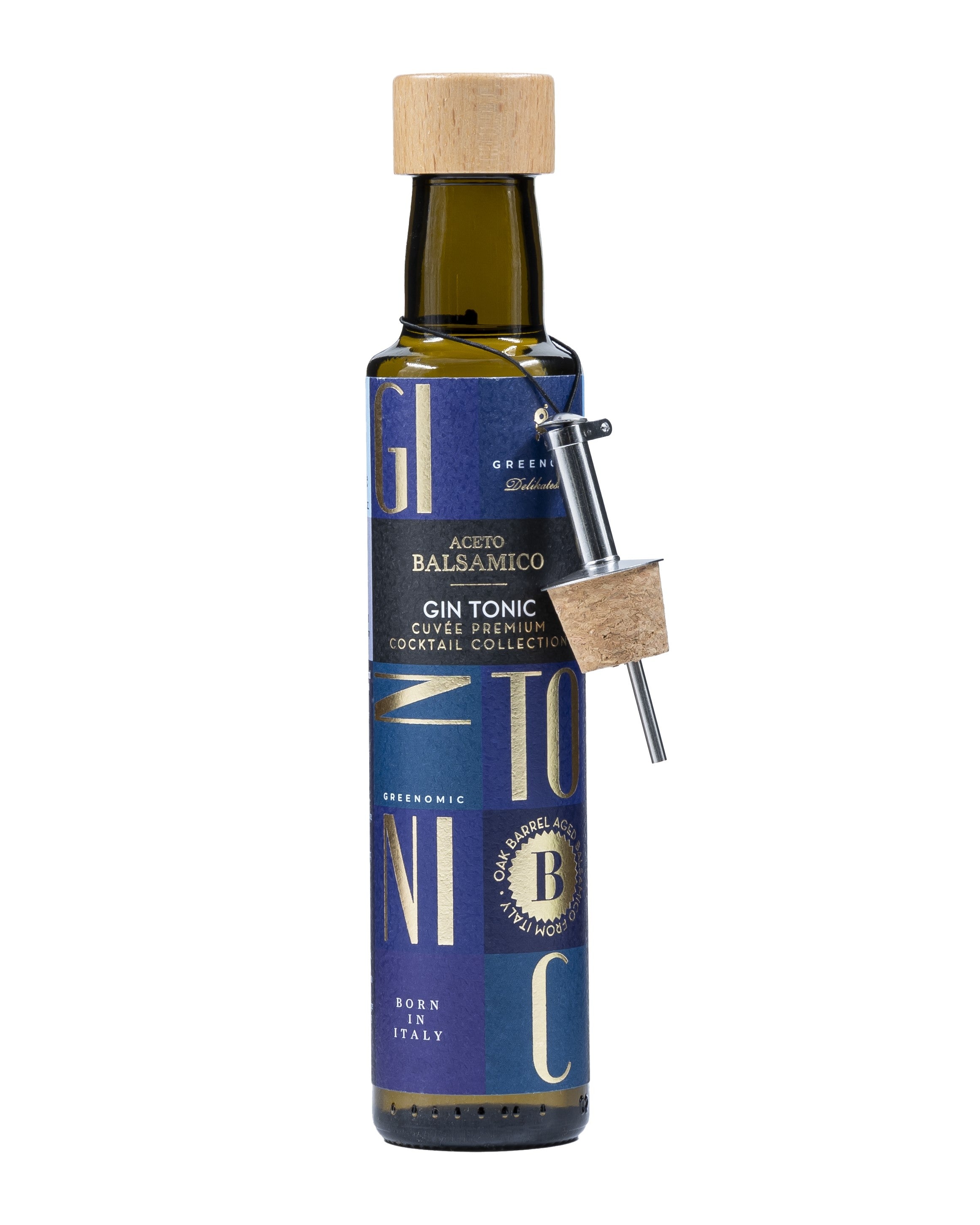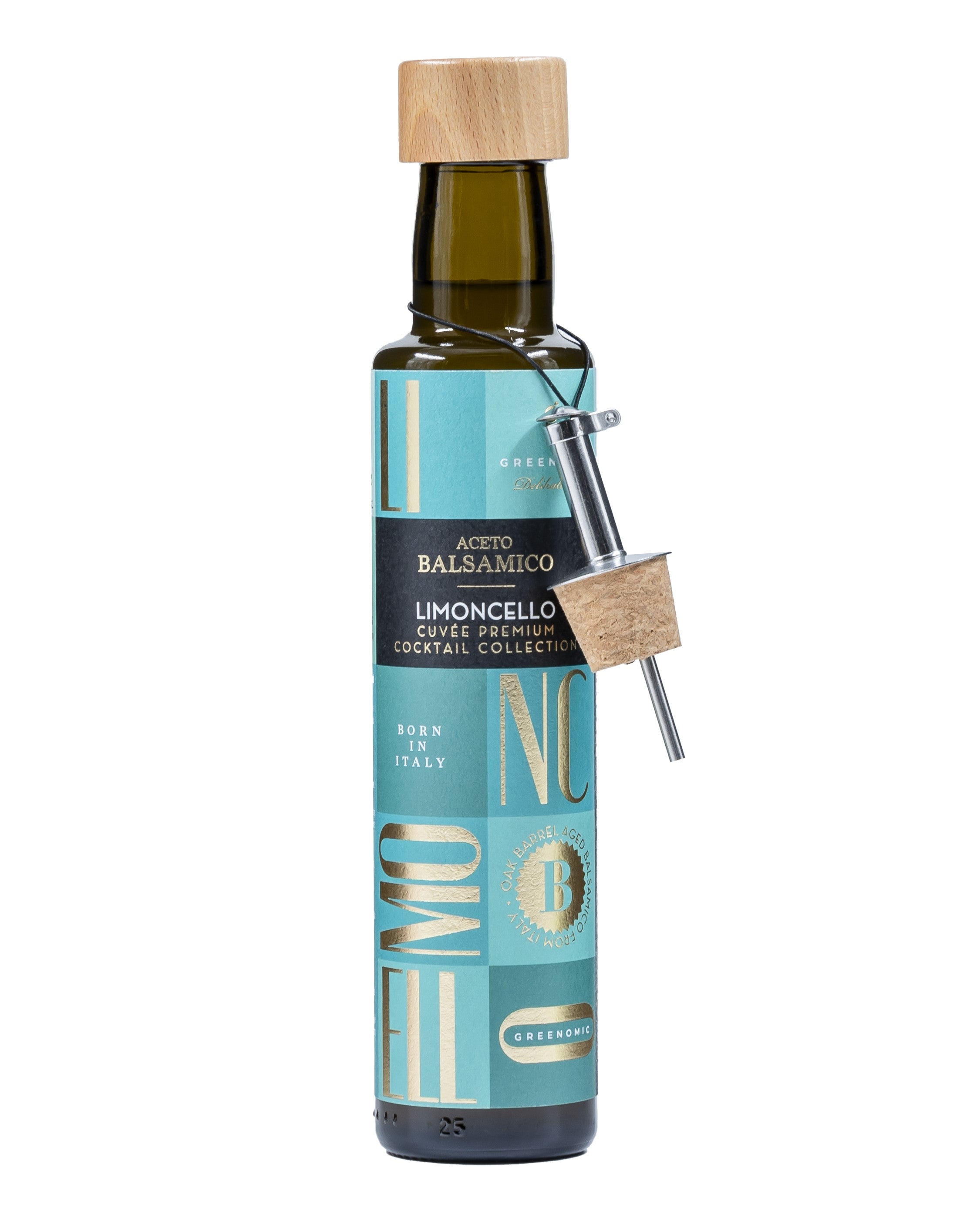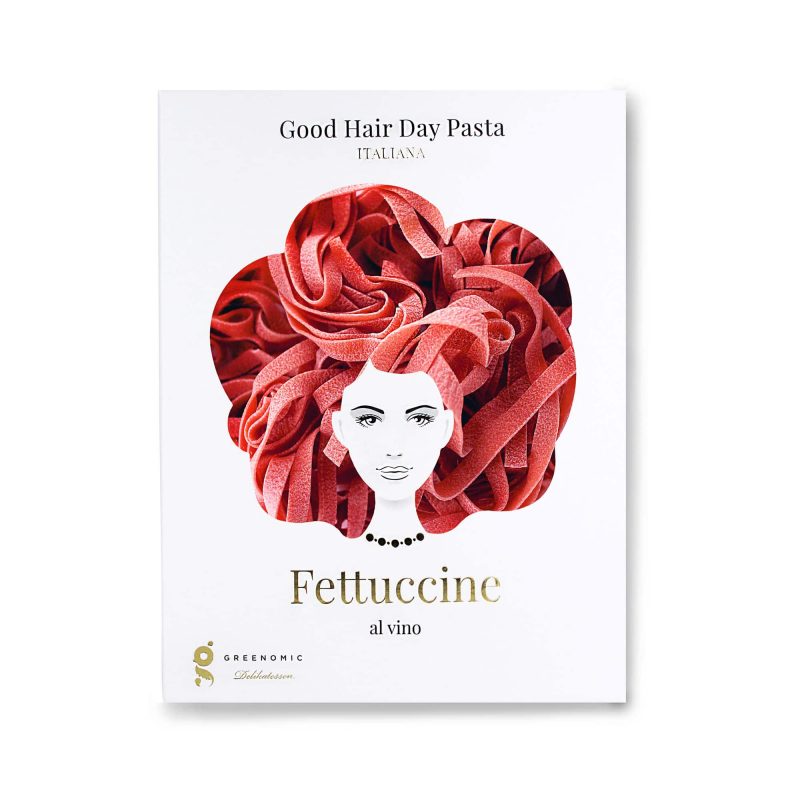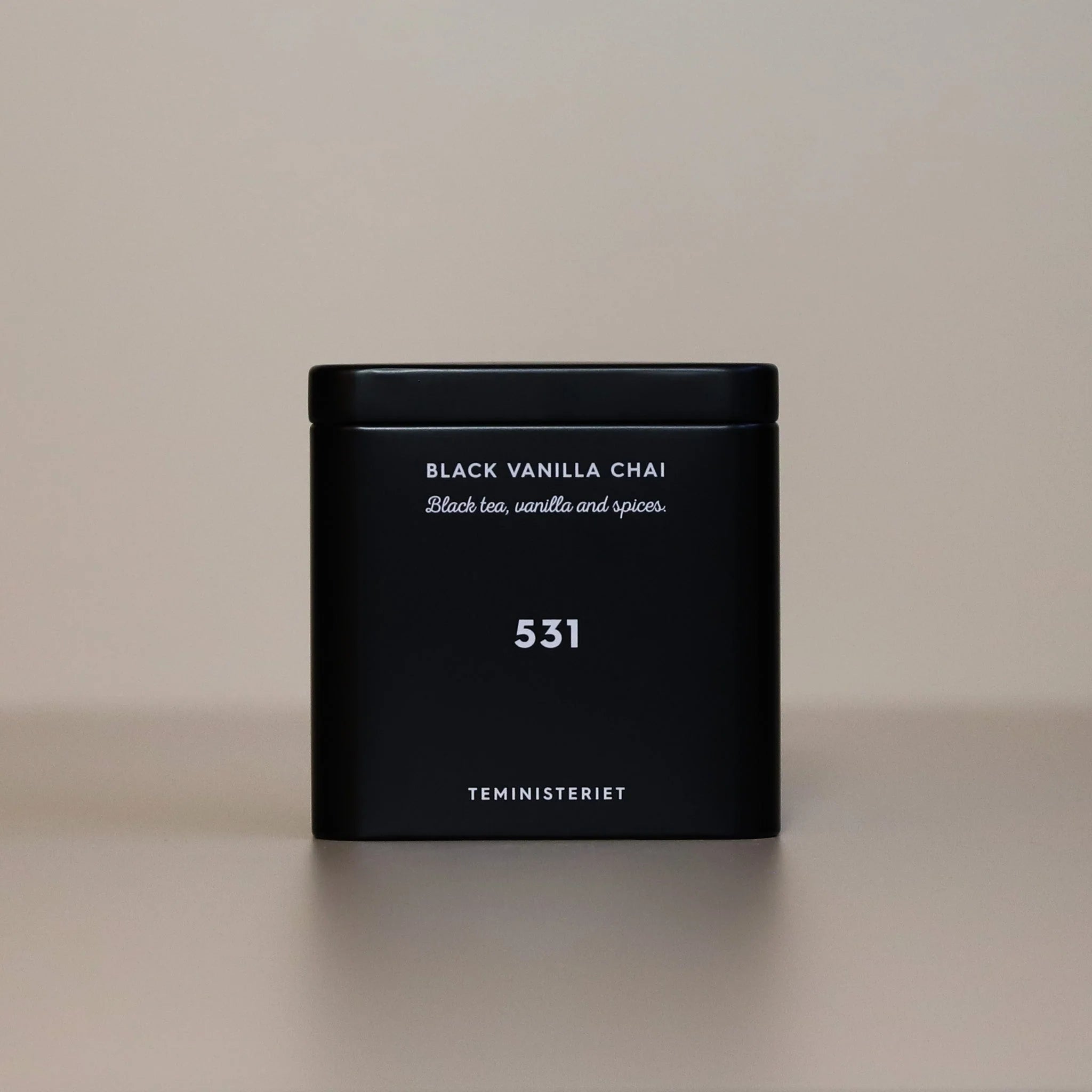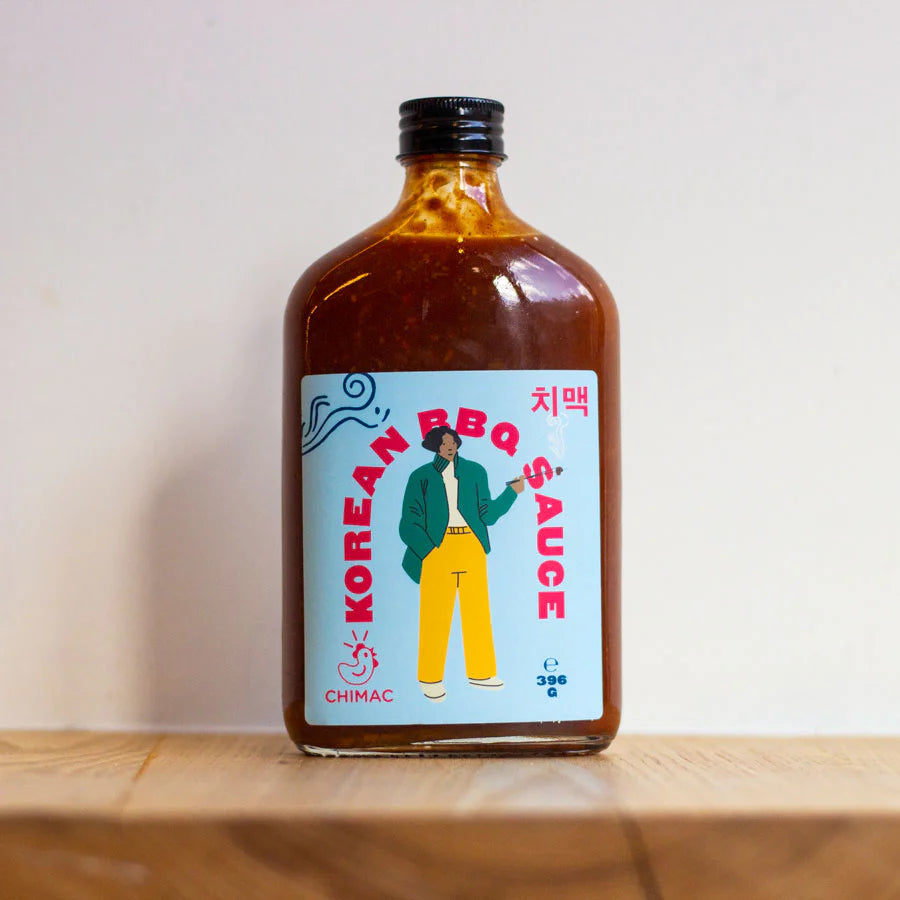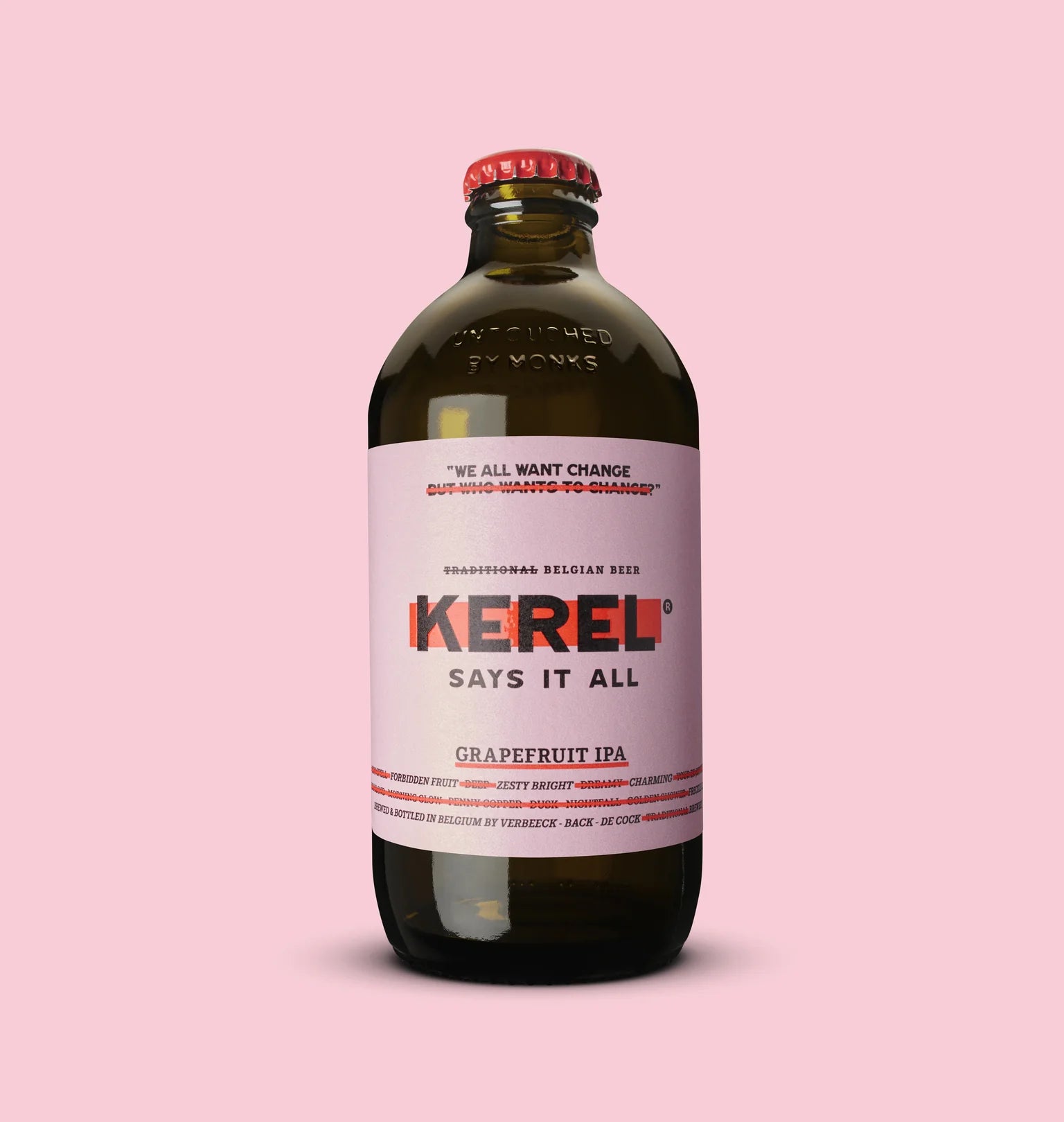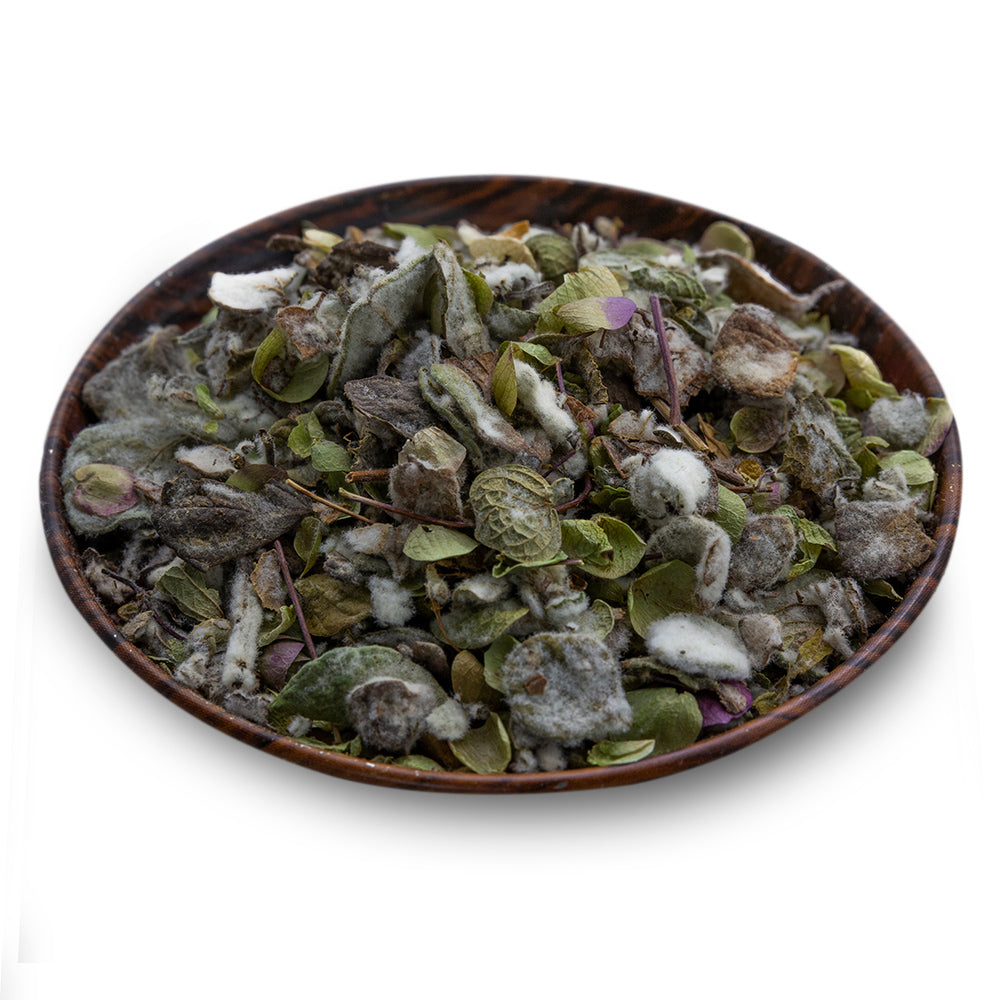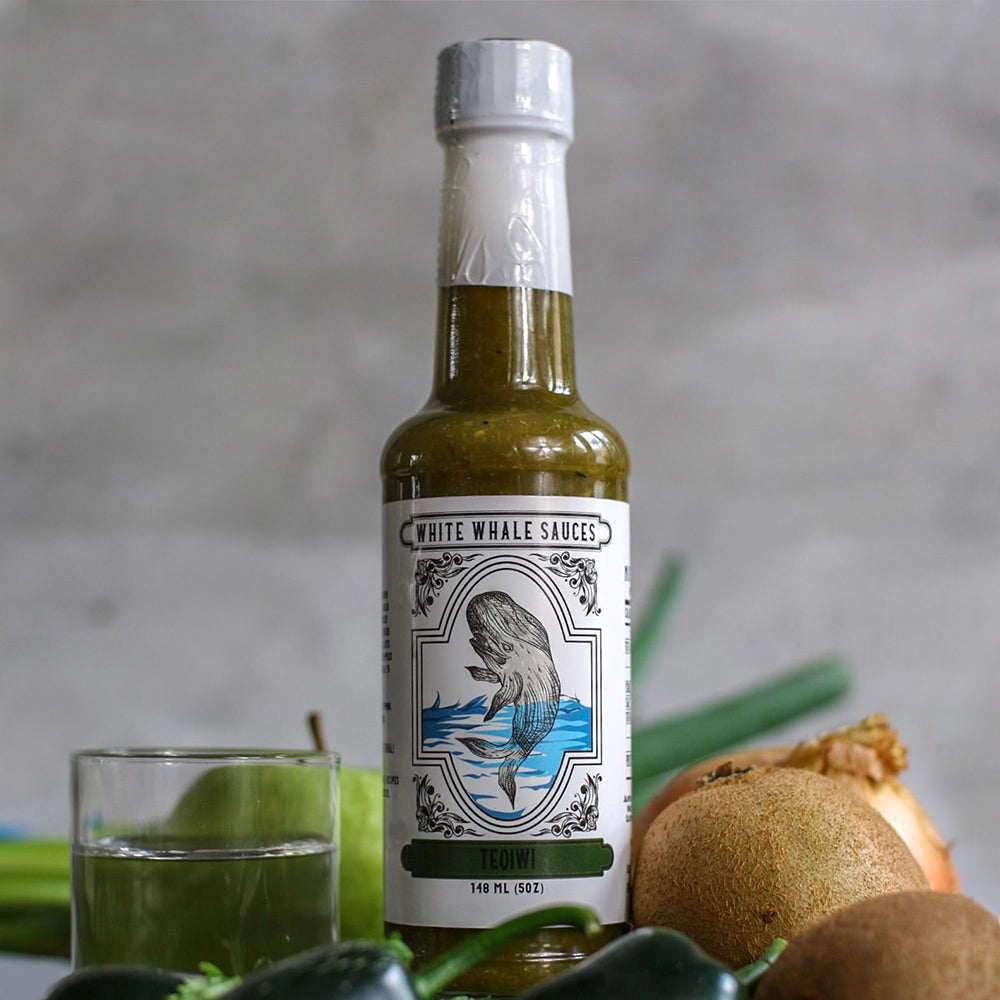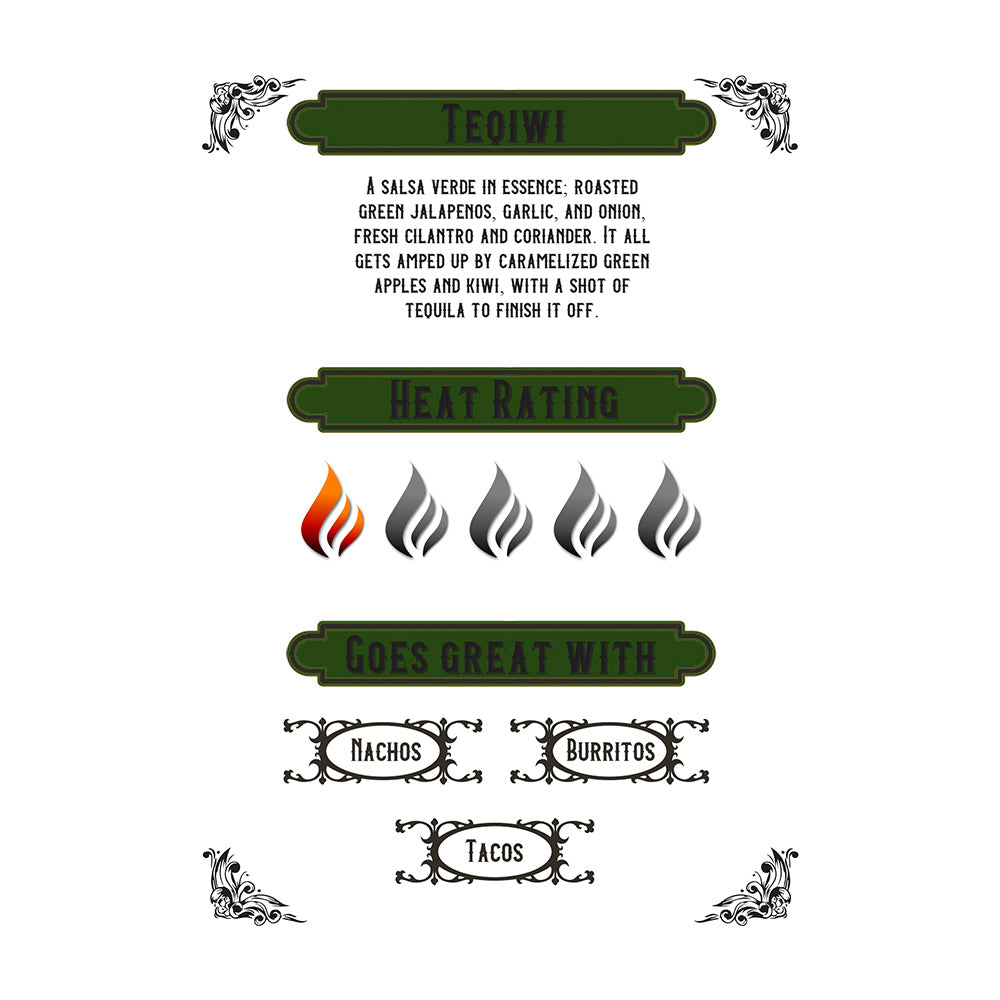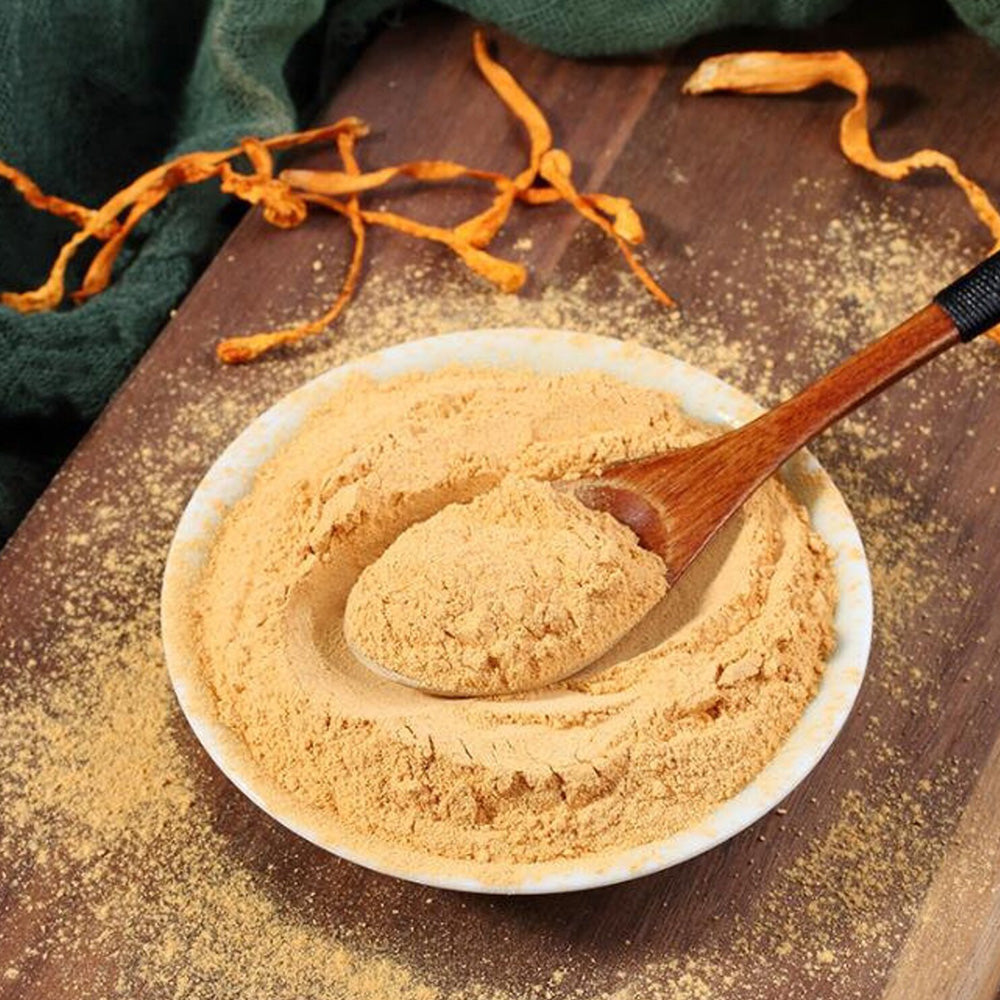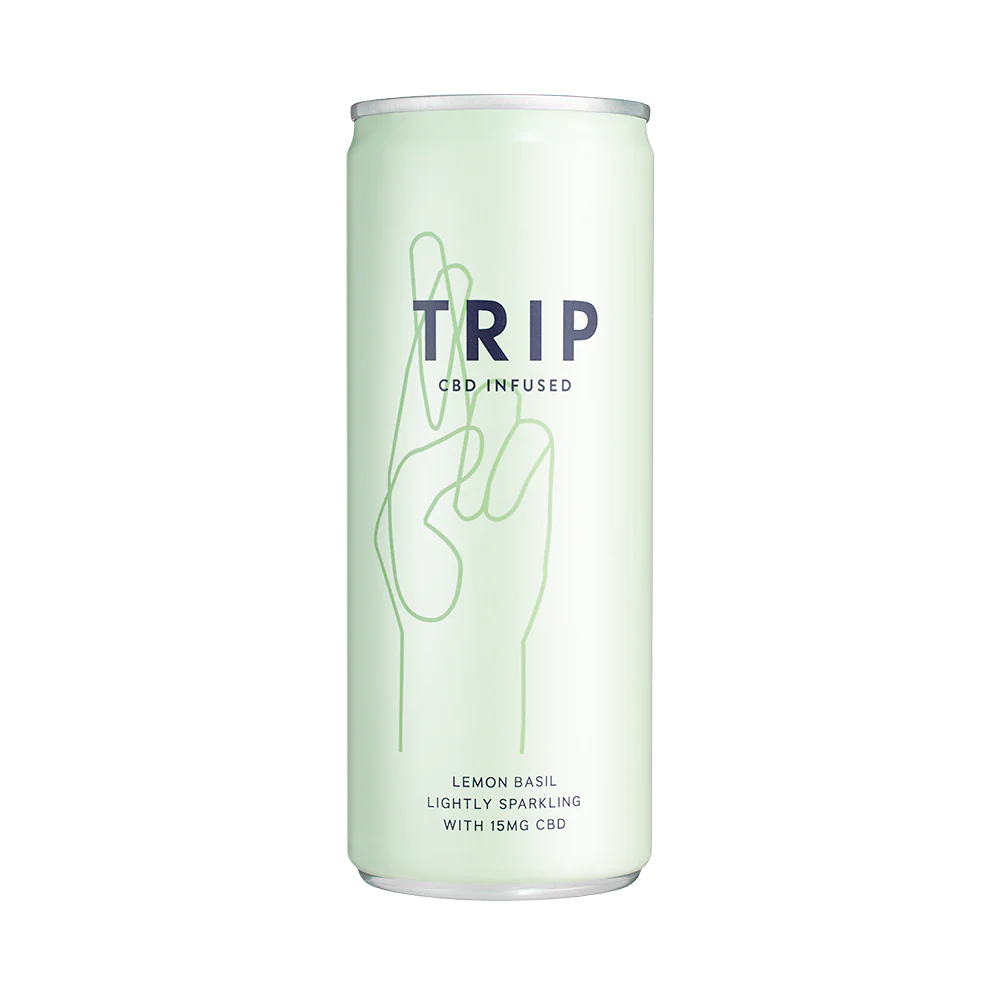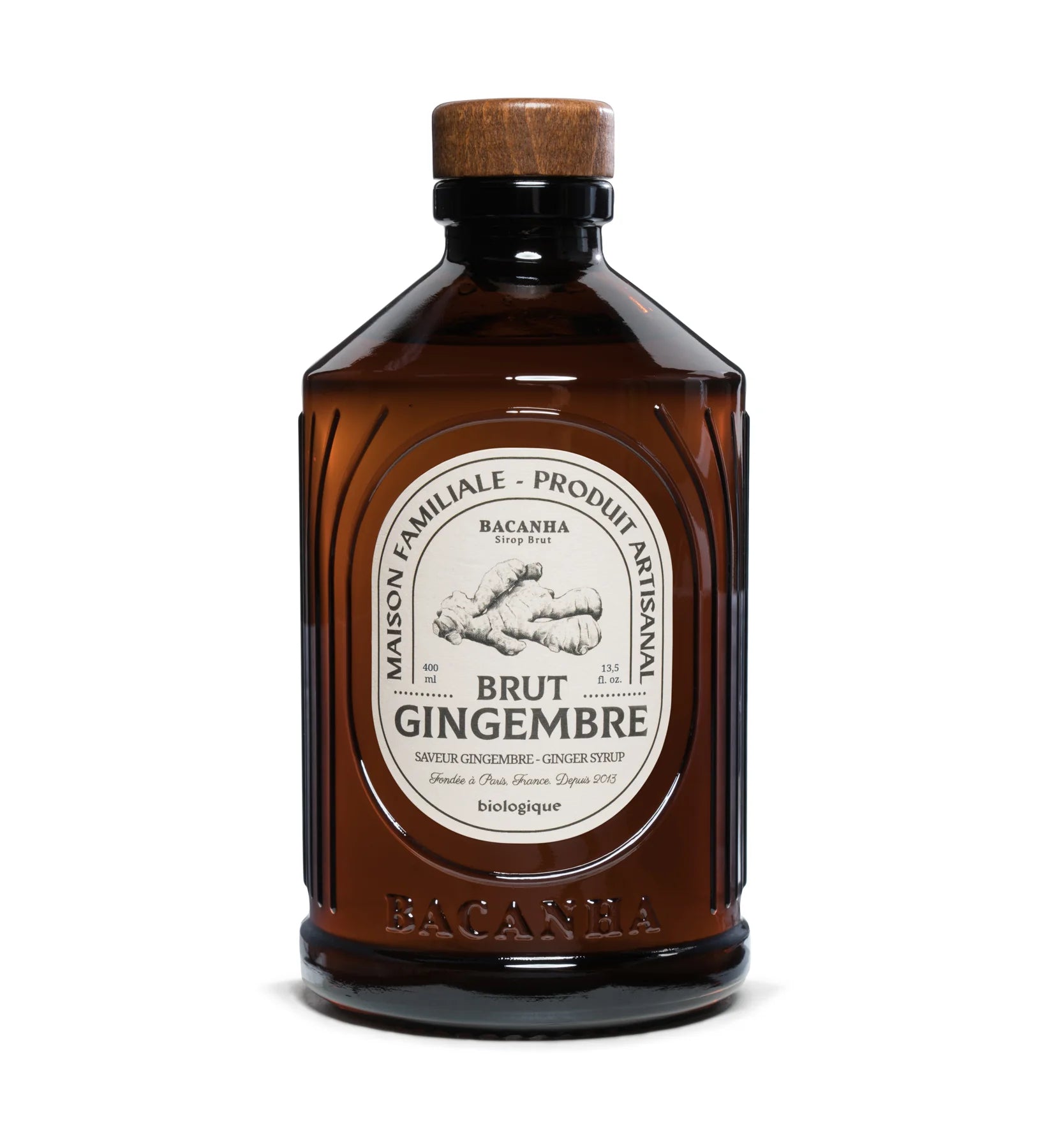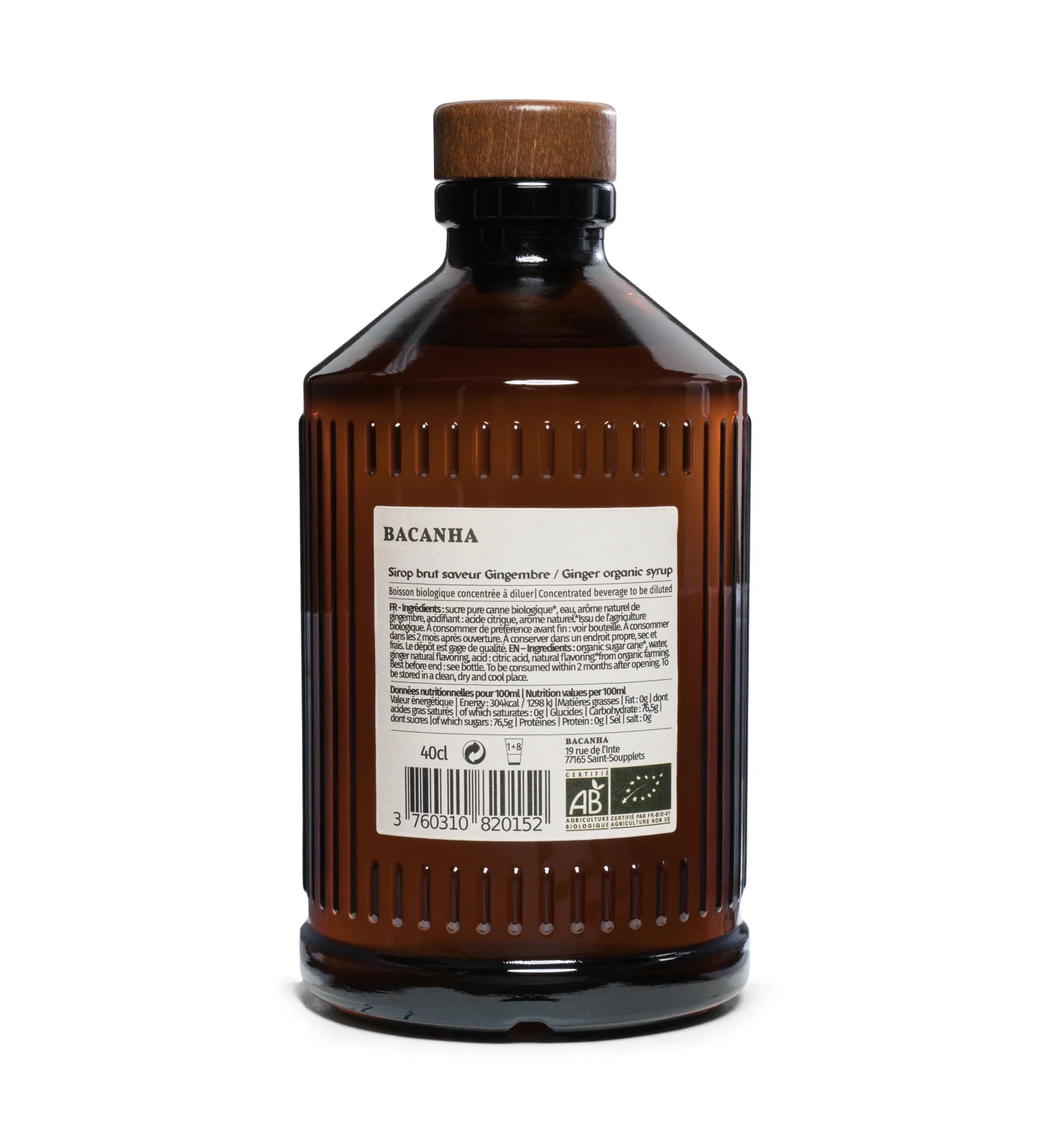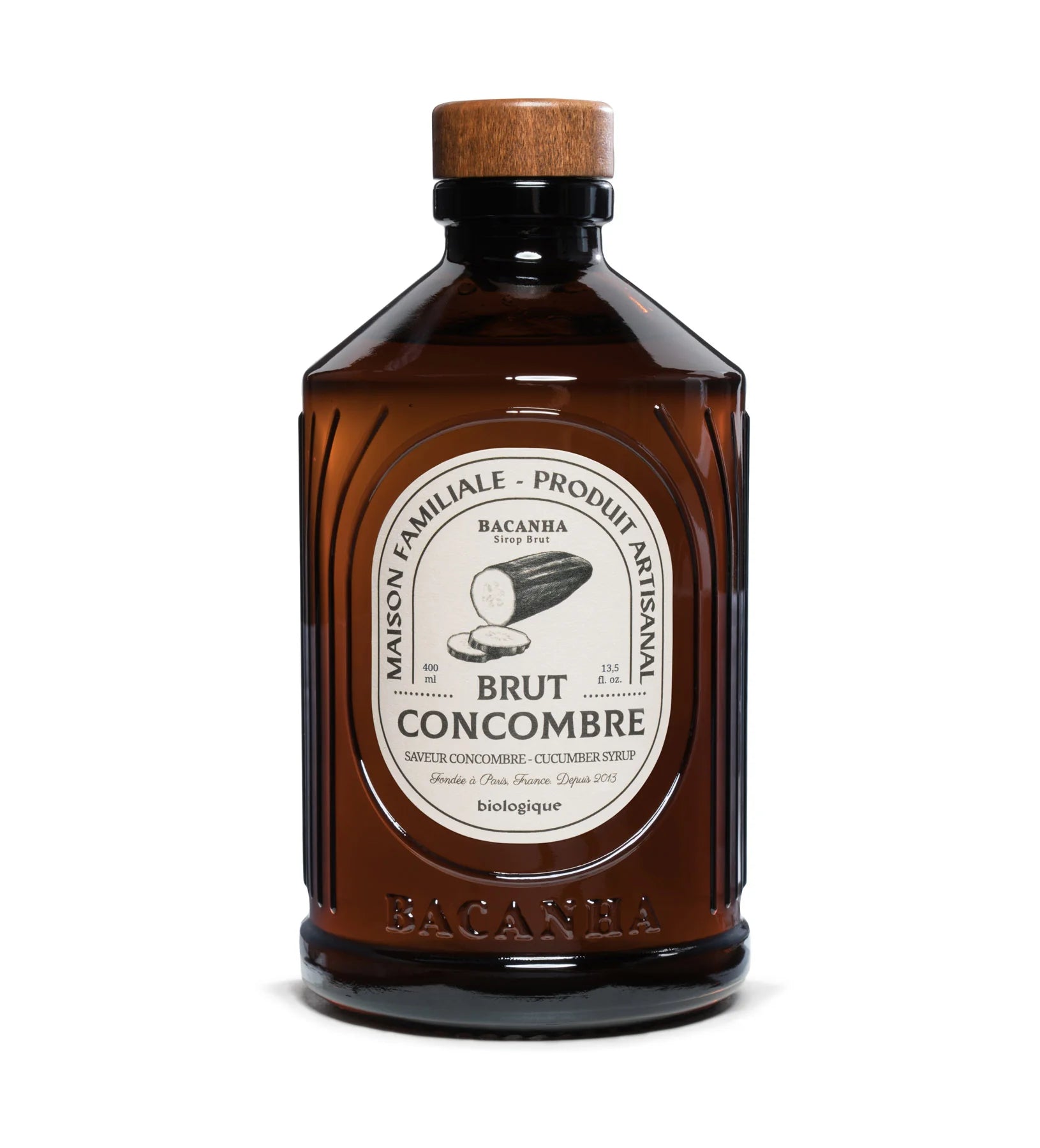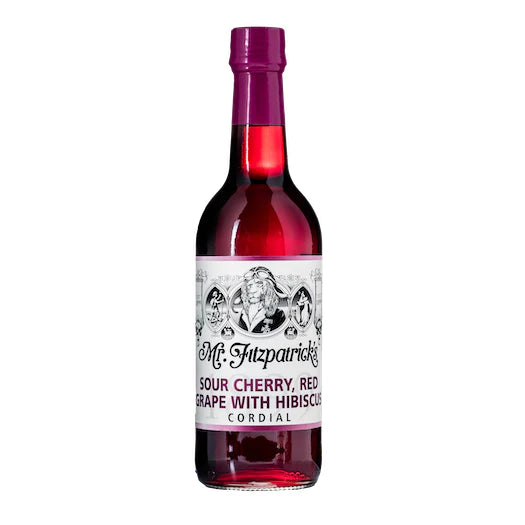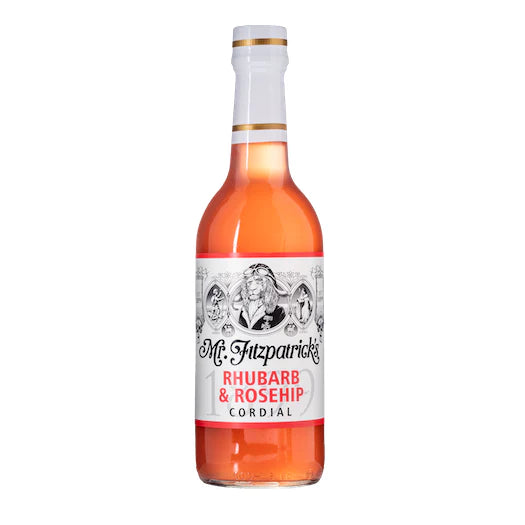About Thyme Leaves Organic
Thyme is an ancient evergreen herb that has been renowned for its myriad uses for thousands and thousands of years. In addition to its value as a culinary herb, it is also known for uses both medicinal and ornamental. It is a member of the mint family and a relative of oregano.
Even if you don’t cook that often or just beginning to build your herbs & spice collection, thyme should be early part of your list. It is one of the most versatile and commonly-used herbs. Cooks of any type of cuisine can use it. Thyme has a great quality of blending with other herbs, spices and flavors rather than dominating, which makes it an essential addition to even the most basic of spice racks.
The aroma of thyme is very subtle and rather dry. Its flavor is very earthy and a little bit sweet, with a slightly minty taste. Warm, peppery undertones add depth to the overall flavor profile of this herb. Oftem only the most sophisticated of palettes can detect its lightness or when thyme is used in large amounts.
Thyme contains impressive amounts of some essential vitamins and nutrients including: Vitamin C, Vitamin A, Dietary Fiber, Copper, Iron, Manganese.
Storage and shelf life
Store organic thyme leaves in a dry and sealable food storage container – we recommend glass. Keep the container in a cool, dry and dark area out of the sun and heat. Sunlight and heat can reduce the nutritional and flavoring quality of the herb. Keep the container away from liquids that may leak into it.
Organic thyme leaves, when properly stored, have a shelf life for up to 1 year.
Shipping and delivery
The product is available for delivery and pick up from our store in de Pijp.
The product is delivered in recycled paper bags.
Nutricional information
Per teaspoon (1,2g)
Calories 3,9
Total Fat 0,1gr
Saturated Fat 0g
Trans Fat 0g
Polyunsaturated Fat 0g
Monounsaturated Fat 0g
Cholesterol 0mg
Sodium 0,8mg
Potassium 11mg
Total Carbohydrates 0,9g
Dietary Fiber 0,5g
Sugars 0g
Protein 0,1g
Allergens: No known allergens.
How to use
While dried thyme possesses a nearly identical flavor profile to its fresh counterpart, you need to rehydrate it – whether on its own or during the cooking process (i.e. adding to a braised dish or bread dough) -in order to display its full range. You can substitute dried thyme leaves for fresh in any application, but use one-third as much dried thyme as you would use fresh.
Use thyme to flavor vegetable soups, stocks, tomato and wine-based sauces, stews and casseroles and in marinades. It also gives flavor to bread and cookies. You can also soak dried thyme in boiled water to make a traditional herbal beverage.
Flavor Pairings
Lamb, rabbit, pulses, eggplant, cabbage, carrot, leeks, mushrooms, tomatoes, onions, potatoes, sweetcorn. It is an integral part of the classical herb mixtures “bouquet garni” and “herbes de Provence
Other interesting information
The origins of thyme can be traced back to ancient societies throughout the Mediterranean, though it’s now grown and cooked with all over the world. Its uses have not always been purely culinary. There is evidence of ancient Egyptians utilizing thyme’s powerful antiseptic properties in embalming rituals. The Romans considered the herb a symbol of bravery and strength—particularly with regards to military prowess—and would exchange it among themselves, pin sprigs to their garments before battle, and burn bunches of it to purify the air in homes and places of worship.
